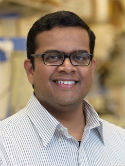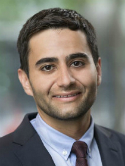Clinicopathologic, genomic, and immunophenotypic landscape of ATM mutations in non-small cell lung cancer Journal Article
| Authors: | Ricciuti, B.; Elkrief, A.; Alessi, J.; Wang, X.; Li, Y.; Gupta, H.; Muldoon, D. M.; Bertram, A. A.; Pecci, F.; Lamberti, G.; Di Federico, A.; Barrichello, A.; Vaz, V. R.; Gandhi, M.; Lee, E.; Shapiro, G. I.; Park, H.; Nishino, M.; Lindsay, J.; Felt, K. D.; Sharma, B.; Cherniack, A. D.; Rodig, S.; Gomez, D. R.; Shaverdian, N.; Rakaee, M.; Bandlamudi, C.; Ladanyi, M.; Jänne, P. A.; Schoenfeld, A. J.; Sholl, L. M.; Awad, M. M.; Cheng, M. L. |
| Article Title: | Clinicopathologic, genomic, and immunophenotypic landscape of ATM mutations in non-small cell lung cancer |
| Abstract: | Purpose: ATM is the most commonly mutated DNA damage and repair gene in non-small cell lung cancer (NSCLC); however, limited characterization has been pursued.Experimental Design: Clinicopathologic, genomic, and treatment data were collected for 5,172 patients with NSCLC tumors which underwent genomic profiling. ATM IHC was performed on 182 NSCLCs with ATM mutations. Multiplexed immunofluorescence was performed on a subset of 535 samples to examine tumor-infiltrating immune cell subsets.Results: A total of 562 deleterious ATM mutations were identified in 9.7% of NSCLC samples. ATM-mutant (ATMMUT) NSCLC was significantly associated with female sex (P = 0.02), ever smoking status (P < 0.001), non-squamous histology (P = 0.004), and higher tumor mutational burden (DFCI, P < 0.0001; MSK, P < 0.0001) compared with ATM-wild-type (ATMWT) cases. Among 3,687 NSCLCs with comprehensive genomic profiling, co-occurring KRAS, STK11, and ARID2 oncogenic mutations were significantly enriched among ATMMUT NSCLCs (Q < 0.05), while TP53 and EGFR mutations were enriched in ATMWT NSCLCs. Among 182 ATMMUT samples with ATM IHC, tumors with nonsense, inser-tions/deletions, or splice site mutations were significantly more likely to display ATM loss by IHC (71.4% vs. 28.6%; P < 0.0001) compared with tumors with only predicted pathogenic missense mutations. Clinical outcomes to PD-(L)1 monotherapy (N = 1,522) and chemo-immunotherapy (N = 951) were similar between ATMMUT and ATMWT NSCLCs. Patients with concurrentATM/TP53 mutations had significantly improved response rate and progression-free survival with PD-(L)1 monotherapy.Conclusions: Deleterious ATM mutations defined a subset of NSCLC with unique clinicopathologic, genomic, and immunophe-notypic features. Our data may serve as resource to guide inter-pretation of specific ATM mutations in NSCLC. |
| Keywords: | assay; inhibition |
| Journal Title: | Clinical Cancer Research |
| Volume: | 29 |
| Issue: | 13 |
| ISSN: | 1078-0432 |
| Publisher: | American Association for Cancer Research |
| Date Published: | 2023-07-01 |
| Start Page: | 2540 |
| End Page: | 2550 |
| Language: | English |
| ACCESSION: | WOS:001027431800001 |
| DOI: | 10.1158/1078-0432.Ccr-22-3413 |
| PROVIDER: | wos |
| PUBMED: | 37097610 |
| PMCID: | PMC11031845 |
| Notes: | Article -- Source: Wos |
Altmetric
Citation Impact
BMJ Impact Analytics
MSK Authors
-
 249
249Gomez -
 1336
1336Ladanyi -
 82
82Bandlamudi -
 141
141Schoenfeld -
 102
102Shaverdian -
 43
43Elkrief -
 8
8Muldoon
Related MSK Work



